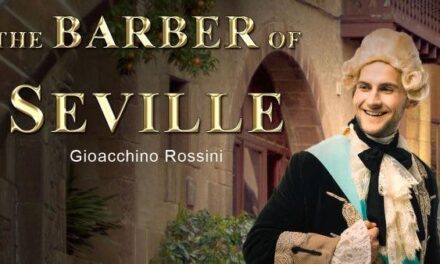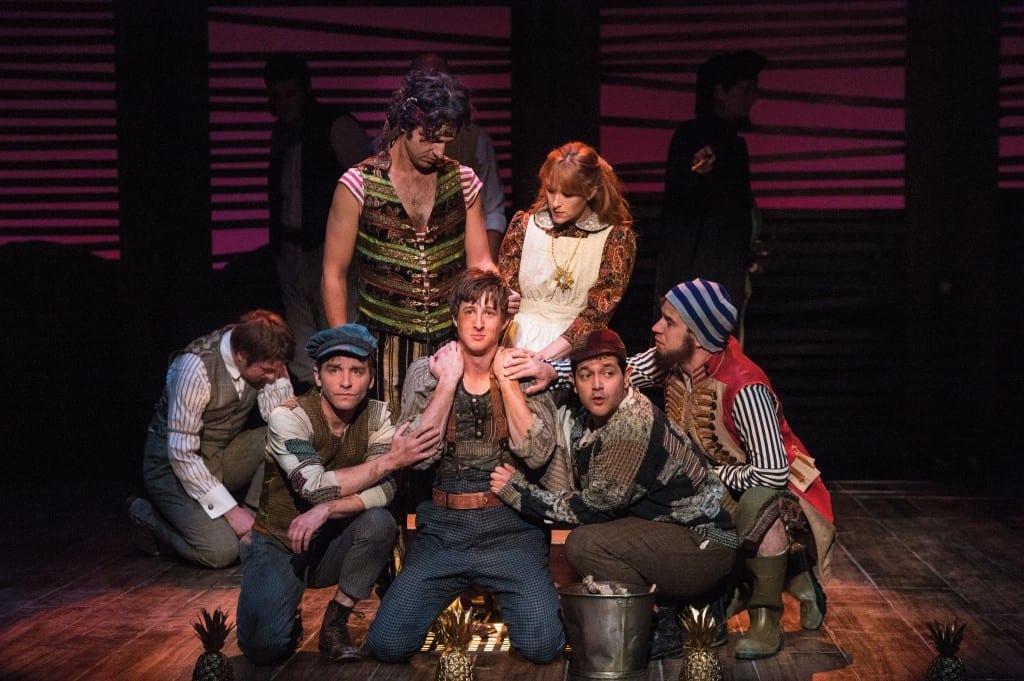BLUFFDALE — In the 1966 film “How the Grinch Stole Christmas!”, the evil, selfish protagonist’s heart grows three sizes due, in part, to the kindness of children. After seeing Bluffdale Arts’ Joseph and the Amazing Technicolor Dreamcoat, I feel my own heart has grown toward the musical, thanks to the efforts of a mostly youth cast.
With over 100 participants, Bluffdale’s pageant-level production fills the stage of Hidden Valley Middle School from end to end, back to front. It is a visually overwhelming experience. And while that can make it difficult to know where to look at times, it also provides unique opportunities that the production takes advantage of.
All 100+ children, ranging in age from babes in arms and tiny toddlers to teenagers, wear a rainbow tie dye cast t-shirt appropriate for a colorful show about a kaleidoscopic wardrobe. While tradition demands that children accompany numbers like “Any Dream Will Do”, the children here are a titanic force; a mountain of youth providing scenery as well as vocals. During that number, for example, children form rotating circles around Joseph and three Narrators, creating large-scale motion on the stage.
But the most interesting choice of director Peter Johnson is taking this one step further, and turning the chorus into characters (or “Shadows” as the program says) that have agency and influence on the plot. When Potiphar’s Wife moves on Joseph, for example, tie dyed children literally shield him from her advances. And Joseph’s Shadow, played prominently by Malia Otufangavalu, stands shackled with him in prison, even singing her own verse of “Close Every Door.” What these shadows represent (divine influence, perhaps?) is up to audience interpretation. But whatever the meaning, Johnson’s choice to do something new with the familiar musical is laudable. The introduction of more female characters like the brothers’ wives is also commendable.
In the lead role, Cody Garrard displayed an appropriate wholesomeness and innocence. He has a nice tenor voice that never sounded strained as it went into upper register—he also had good expressions, especially when reunited with his father, Jacob. Among the rest of the cast, Carrie Mercer stood out as one of three Narrators, with poised body movement and wonderful pitch, tone and phrasing.
Costuming by Elizabeth Lines and Laura Garner was a highlight of the production. Quality-looking Middle Eastern tunics, robes and sandals are worn by the men of the cast; and Joseph’s light-colored outfit matches the purity of his character. In the production’s most successfully staged number, “Song of the King,” dancers wore beautiful pleated white dresses with blue and gold sashes that added life to the already vibrant number.
Also on the costuming front, The Passing Goat played by Georgia Christensen earned applause for a clever bit of costuming and acting. After the brothers had surrounded the character and ripped pieces of woolly material off her, Christen burst out of the melee wearing a skeleton costume, earning cheers and applause.
Sequins dominated costuming of the Narrators and Pharoah. The plaid black and white shirts the Narrators don in the opening Bible Camp scene are quickly replaced in “Jacob and Sons” with sequined blouses and black dress pants. And Pharaoh’s dazzling outfit featured a blue sequin jacket, and matching bell bottoms with blue sequin accent flares; a sequined blouse with a popped collar completed the Vegas-era Elvis look.
Another innovation of this production is framing the show as a Bible Camp story. During the “Prologue” that opened the musical, youth played typical camp games while the three narrators (Mercer, Erin Jones and Sarah Schievin) were costumed as camp counselors. A woodsy campfire scene was painted on triangular wooden panels as a backdrop (these panels were later rotated to reveal Egyptian figures for efficient scene changes).
The production did have some challenges that can be expected in a community production. “Stone the Crows” had an extended stoppage due to a sound cue, and Garrard missed half of “Joseph’s Dreams”. Some dancers also appeared unable to perform some moves (perhaps due to injury?). There were some mike issues too—but there were also about 30 mikes onstage and most of the time they worked very well, which is commendable (sound was by Karla Zimmermann and Sam Thompson).
Lighting design by Tiare McGee and Clint Checketts supported the production well, and light cues were effective—the rainbow lights against the backdrop for the closing number were visually appealing. The absence of a monitor seemed to result in some slightly delayed vocal entrances (including the Narrators’ first song), which is understandable given the middle school stage venue.
Having a cast full of children created some fun moments, and the kids generally seemed to be having a good time. In one of the most delightful parts of the production, a runaway toddler was scooped up by a handler mid-stage, leading to “awws” from the audience. After seeing Bluffdale’s production, I no longer hate Joseph. While this community production will likely be most enjoyable to the thousands of friends and family of the cast, the joy and voices of 100 children warmed my cold heart to more appreciate Utah’s favorite musical.





